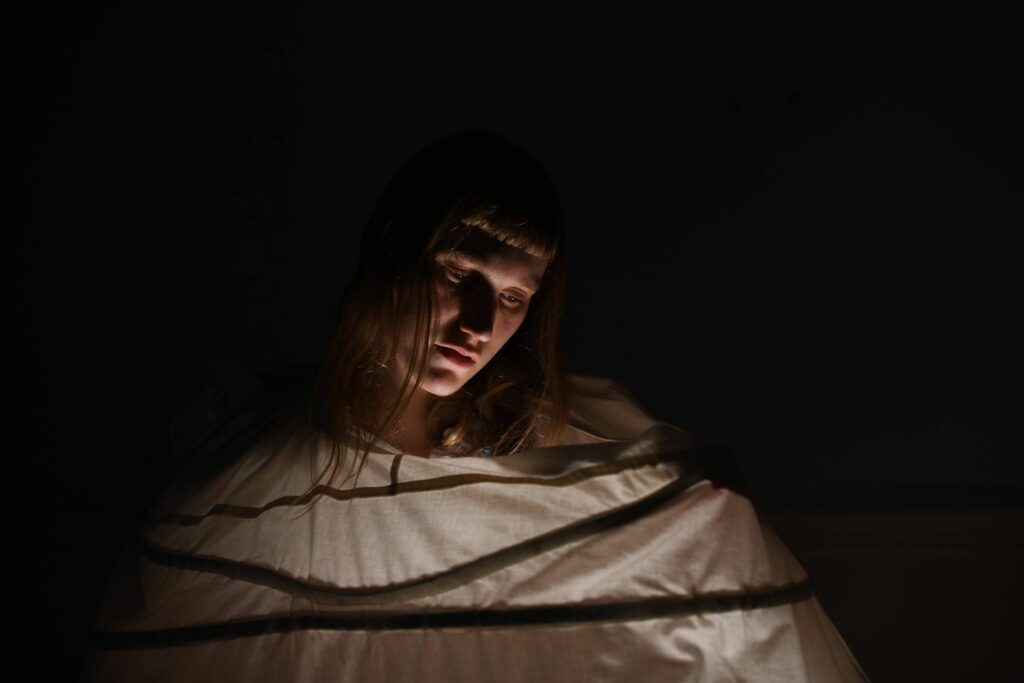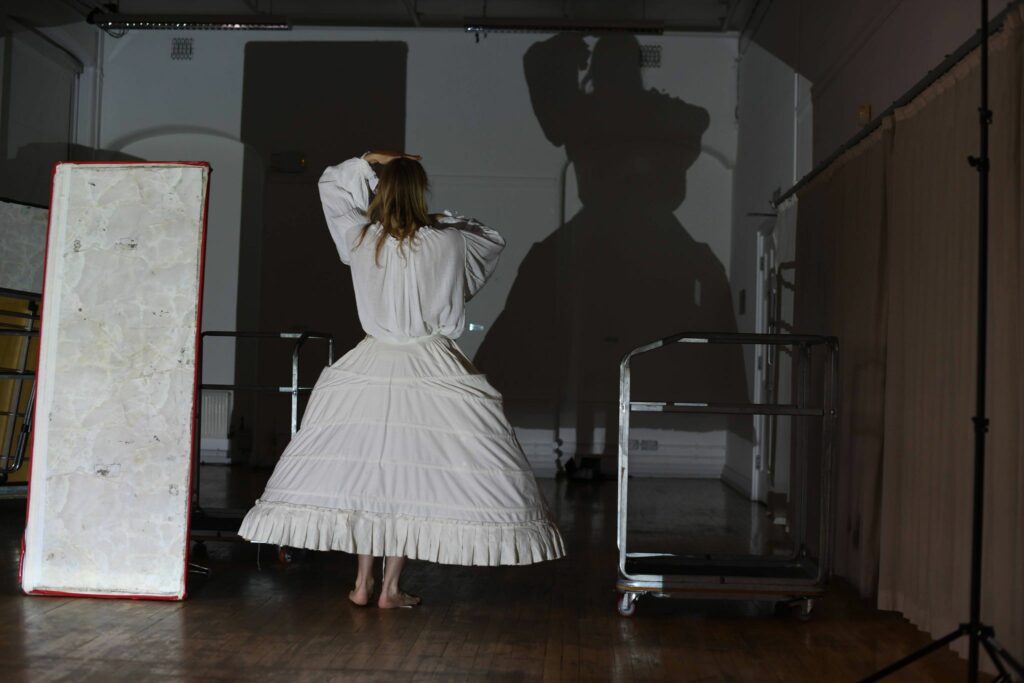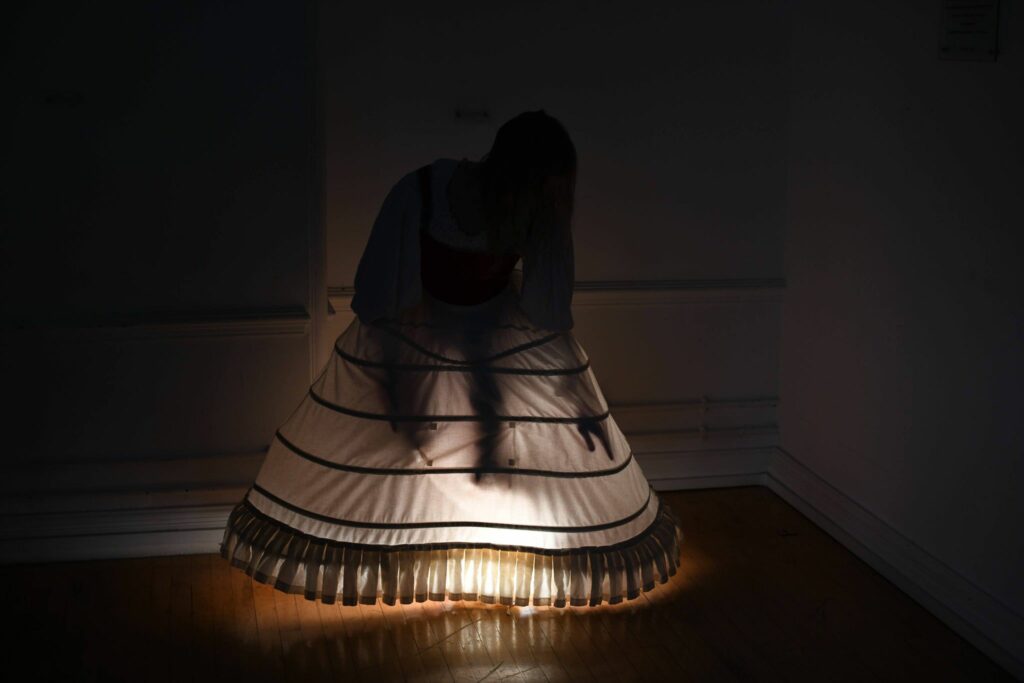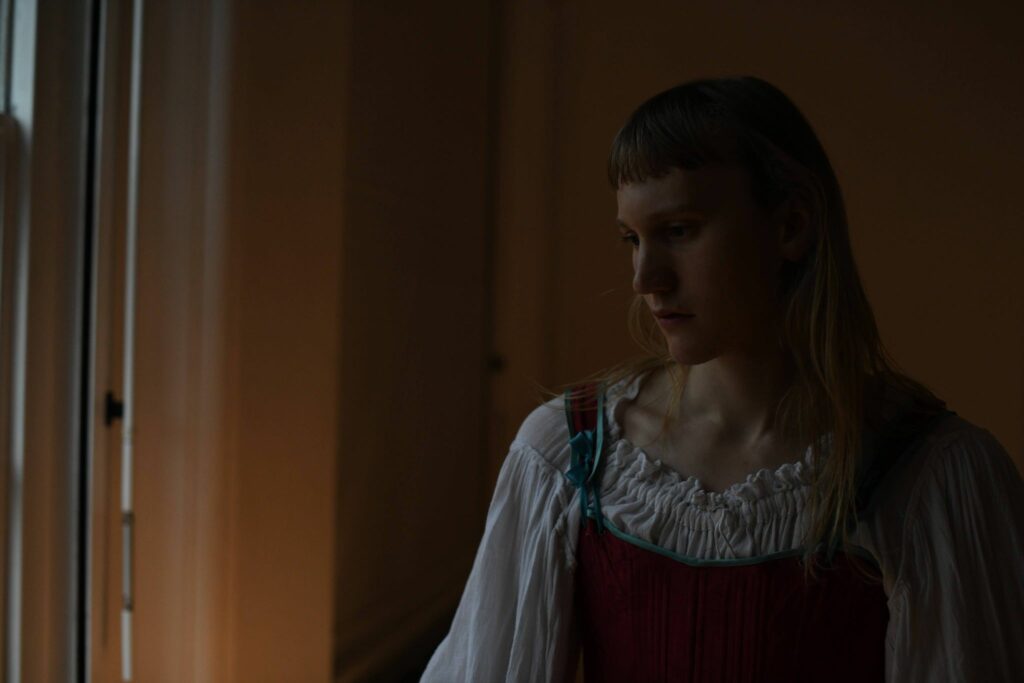Anders Duckworth is a British/Swedish artist whose work blurs the line between movement, clothing design, installation and film, exploring the boundaries of what constitutes performance. After training at London Contemporary Dance School, they went on to work with leading choreographers including Maresa Von Stockert and Lea Anderson who were hugely influential for Anders’s own creative process. Their new project ‘Mapping Gender’ is a collaboration with sound artist Kat Austen that explores the historical narratives that still underpin gender stereotypes in society. Through story extracts, movement and visual imagery we hear from the non-binary community who are calling for greater visibility.
Overview:
Could you talk about your experience as a non-binary artist? Have you felt supported by the dance community?
As an artist, I feel there is a certain responsibility to be an activist and to advocate for non-binary people. For me there is friction between yes, I have a non-binary identity, but this doesn’t always have to dictate the work I want to create. But having said that I have gained a huge amount of joy and empowerment from resourcing my experiences as a non-binary artist.
There is a history of gender nonconformance within the dance sector. It gives us a lot of space for experimentation but what it does not provide is a proper acceptance of your identity as being truthful and valid. It is not just a ‘performance’.
How can we change gender perceptions and increase visibility for people who identify as non-binary?
I think there is visibility for non- binary people, however there is so much that is still unknown and misunderstood. Non-binary is a large overarching umbrella term to include all gender nonconformance. It is about education and helping people to understand where a non-binary person might or could be coming from. We can increase visibility for non-binary people by making sure support is always there. For example, it being a standard practice that there is always accessible gender-neutral toilets. It is basic. When this has not been addressed, it is a real issue because it is a reminder that you are not welcome, and you are not catered for. The very fabric of the building has not considered your needs. This is something that I have confronted many times. With the layout of forms and applications, organisations need to make sure that the appropriate titles and gender markers are there. I get so frustrated when I come across ‘prefer not to say’, I am non-binary and I am proud of that, I should be allowed to state this.
Have you experienced transphobia as an artist, especially as someone who puts themselves out in the public eye?
Transphobia always arises because of a lack of understanding. The transphobia I have experienced has manifested out of panic, where people have not had the foresight to realise that they are engaging with a non-binary person. They cannot rely on assumptions or the standard template which they are used to falling back on. It is really tricky to deal with because it can be personal, and it puts me in a position where I am having to examine myself constantly.
One of the reasons I think transphobia happens is because when a trans or a non-binary person questions the realness of binary gender it can cause this tension because suddenly it puts cis people in a position where their gender is not given. It is not fixed.
Even to this day some auditions advertise male or female. Why are organisations still not doing enough to open access to the trans and non-binary community?
I always get so frustrated when I see an audition looking specifically for either a male or female dancer. It shows a lack of imagination. Also, it lays bare the desire for certain bodies. I have seen more opportunities that advertise for women identifying and non-binary people which is helpful. It is a start, because it shows that gender is important in the application process and that the organisation is trying to ensure that there is a more equal representation of genders.
I would love to see more applications that specifically ask for trans and non-binary people because it will help to ensure our visibility. To have this written down feels like a validation. That we are here, that we exist and that we are relevant. And that we are just as valuable as everyone else.
Have you ever been misgendered as an artist? How does this make you feel?
Yes, all the time. It feels very sensitive. For a non-binary person, we don’t receive that reassurance and feedback that we are who we are. Your gender is not reflected every day in the streets. Even though it can be painful, I am trying to make sure that I don’t somehow punish myself or the other person who is mis-gendering me. I am learning to see this as an opportunity for education and learning.
Protest is about wanting to be heard, seen and understood. In that way I am in a position where we, non- binary people have to become a protest. For someone who is quite shy, that is difficult and that is something that I am working with.
Mapping Gender:
What does performance mean to you?
It is a way of sharing and telling stories. Performance is always new even when you are rehearsing. It is this live energy in the space. I love all the work before a performance, all the time spent in the studio where you are making, creating and collaborating with people. This all cumulates towards a live moment where you are in front of people. The audience are then there to hear you and to listen to what you have to say and hopefully participate in some way.
What is your new project Mapping Gender about?
Mapping Gender is a solo performance that focuses on gender and non-conformity. It is a collaboration with sound artists Kat Austen and historical costumer Nadia Miah. The work aims to look at landscape and the way we draw borders and create boundaries on maps to carve up geographical space. It also looks at the body and how we use gender to carve and divide people. These are arbitrary constructs that are omnipresent in society and because of that they have real consequences for people.
Within the performance there are a series of recorded interviews from non-binary people talking about their personal experiences. I wanted to draw all these themes together. To look at the people who exist on the margins and the ‘in-between’ zones and open up new possibilities as well as re-discover the place and complexities we find in gender.
I am working alongside John Foley who is an olfactory artist, to produce different scents for the work which will draw on landscapes and disputed territories. This is the first time I have worked with scent. It is an opportunity for us to really think about who has access to the work and the potential it has in connecting us to memory and place
Alongside this, the project will have an exhibit which will have elements of the performance with objects and artefacts we have collected during our research
Could you talk about your creative process?
I like to work in a multi-disciplinary way. I can see the possibilities and limitations of dance to express certain things which is why I get very excited about how we can move through disciplines and work with people who have come from different creative perspectives and practices.
The groundwork is research, I spend a lot of time reading, exploring and sourcing materials. Once I have the building blocks, I can start making a safe space for people to play and create.
What would you like audiences to take away from the piece?
I would like non-binary people to come away with this feeling of shared hope. This is not new. Gender non-conformity has existed forever however history has strategically tried to erase this from society. I would like them to feel like their voice is present in some way and most importantly that they feel proud of who they are. With cis audiences, I hope the metaphors of boundaries, geographies and landscape will help people understand more deeply what it is like for a non-binary person living today.
Images taken by Jack Williams and Kit Hinchcliffe



